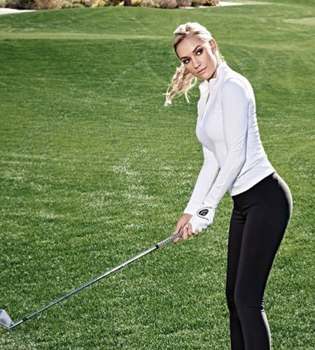Some Female Golfers Have Issues With The New LPGA Dress Code

The LPGA’s recent dress code for its members didn’t draw a rousing cheer from its members. Lexi Thompson was one who chided the Tour with this Instagram post.
Then, there is the attractive ex-San Diego State golfer Paige Spiranac, who is vying to earn LPGA status while making a nice high-profile living with her Instagram account and web postings. She also wasn’t too pleased with the ruling. I’m not sure if someone ghost-wrote this for her on Fortune. com, (if not, she can definitely write) but either way, there are some valid and yes double-standard points to consider.
Back in the early 1900s, it was suggested that women should refrain from hitting the ball longer than 70 to 80 yards since “the posture and gestures required for a full swing are not particularly graceful when the player is clad in female dress.” Women were required to meet societal pressures, even if that meant not being able to correctly execute the same swing.
Furthermore, aside from singling out a certain style of dress, it also, perhaps unintentionally, singles out a certain body type, over which women have no control.
Take the vague banning of “plunging necklines.” What constitutes a plunging neckline? Most likely, this edict was put into place to eliminate the presence of cleavage. In that case, a curvier, fuller-figured woman would be chided and fined far more often than a woman with a smaller bust. In a world where women are continually and unwantedly sexualized, this new rule serves as yet another reason for women to feel ashamed of their bodies, and a reminder that to be respected, they must alter their behavior because of outside perception.
If professionalism in golf equals athleticism, then athleticism should be promoted and showcased, and that means allowing the clothes that promote it. By labeling women as looking “unprofessional” when showing cleavage or shorts worn under a skirt, the LPGA is perpetrating the outdated stereotypes about the connection between what a woman wears and her morals, as well as insinuating that women do not have control over the perception of their bodies, but rather that they must bend to the every whim of the male gaze.






